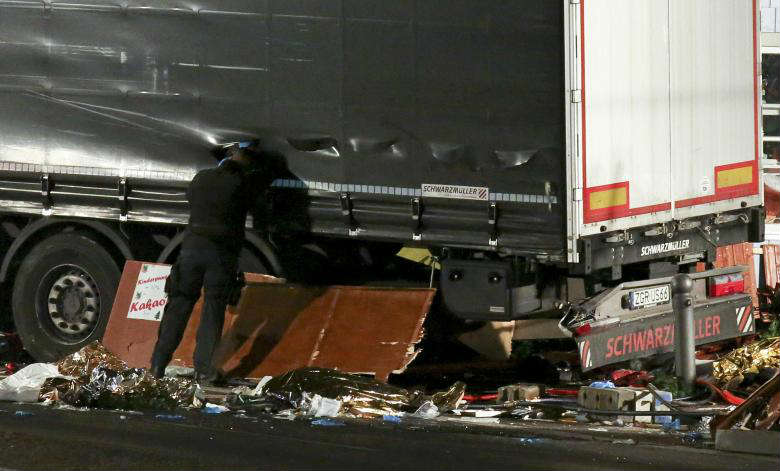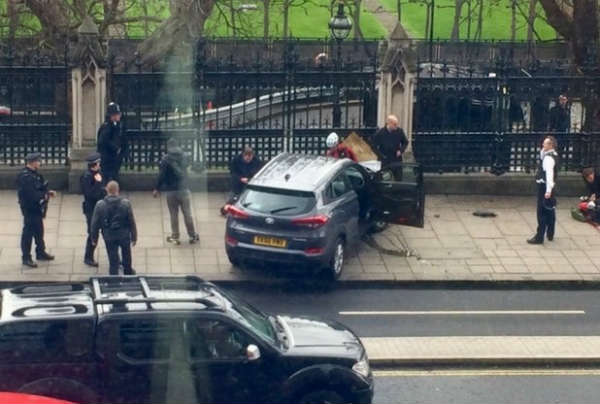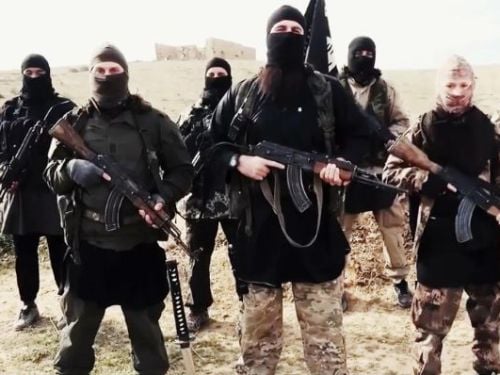Wednesday’s attack in London involved one of terrorists’ new favorite tactics: driving a vehicle into a crowd.
In July, a terrorist in Nice drove a truck into a crowd of people celebrating Bastille Day in the French Riviera, killing 84. And in December, a man rammed a vehicle into a Christmas market in Berlin, killing 12.

In London, a vehicle plowed into pedestrians on Westminster Bridge, leaving at least two dead and 20 injured. The attacker then stabbed a police officer at the gates of Parliament before being gunned down.
Specialists say this latest incident is in line with an emerging model of strikes involving simple, everyday instruments but carried out in locations sure to draw global attention.
“Terrorists rely on a lot of people watching — it can be even better than having a lot of people dead,” said Frank Foley, a scholar of terrorism at the Department of War Studies at King’s College London. “This person appears to have chosen relatively rudimentary weapons, and there was no explosion as far as we can tell. But they’ve attacked a very prominent target, Parliament and Westminster Bridge, and so they’ve immediately flooded the media. Every television station in Europe and America will be carrying this tonight and tomorrow.”

Experts on terrorism in the U.K. said Wednesday’s incident also marked a departure from Britain’s relative success in fending off such attacks, particularly compared to neighbors France and Belgium.
“Britain has actually been reasonably quiet,” said Steve Hewitt, who studies surveillance and counterterrorism at the University of Birmingham. Notable exceptions, he said, include the so-called “7/7” suicide bomb attacks in 2005 in central London, the murder of British Army soldier Lee Rigby in 2013 and the murder of Labor MP Jo Cox last year.
Hewitt suggested that the strength of British defense owed to the expertise of the police and security services, as well as long-term experience dealing with terrorism, going back to the activities of the Irish Republican Army. “It’s hard to make a claim that this represents an escalation,” he said. “It’s a fairly rare occurrence in the U.K. It’s actually somewhat surprising it hasn’t happened more before.”

Strict regulation of firearms in Britain — as compared to the United States, where such attacks have often unfolded at the end of a barrel of a gun — lowers the scale of violence that is possible, Hewitt said. “We live in a country where there are tight gun-control laws, as opposed to in the U.S., where a lone individual acquiring a weapon often legally can cause major death and destruction very quickly,” Hewitt said.
Of course, though, the risk of relatively low-impact assaults is always present, and immensely difficult to mitigate. “How do you stop someone driving down the street who just decides to drive their car into pedestrians?” he asked.
The answer to that question has become increasingly vital in the past few years. as terrorists have begun to shift tactics. In the past, the focus was on large-scale, spectacular attacks that involved scores of people and meticulous training. More recently though, groups like the Islamic State and al-Qaeda have called for more spontaneous acts of terror by any means necessary. And these groups have highlighted the potential of automobiles not as car bombs, packed with detectable explosives, but as unpredictable ramming weapons.
As far back as 2010, al-Qaeda’s Yemeni branch encouraged the use of trucks as a weapon. Inspire, its official magazine, ran a piece headlined, “The Ultimate Mowing Machine,” which called on followers to use a truck as a “mowing machine, not to mow grass but mow down the enemies of Allah.” The three-page article includes tips on maximizing casualties, guidance on the best vehicles to use and a photo of an American Thanksgiving parade, describing it as “an excellent target.”
In a 2014 video message, Abu Muhammad al-Adnani, the chief spokesman for the Islamic State, told listeners, “If you are not able to find an IED or a bullet, then single out the disbelieving American, Frenchman, or any of their allies. Smash his head with a rock, or slaughter him with a knife, or run him over with your car, or throw him down from a high place, or choke him.”
A November 2016 issue of the Islamic State’s Rumiyah magazine extolled the virtues of using large load-bearing trucks to cause a “bloodbath.”
“We have reached a stage where terrorist organizations want to create an environment in which they could hit anywhere at any time, using whatever method,” a European security official told my colleagues last year. “The videos and messages against France and other European countries have been published in various social-media platforms, with the message to ‘use whatever to kill, even cars.’ ”
Source : MSN




